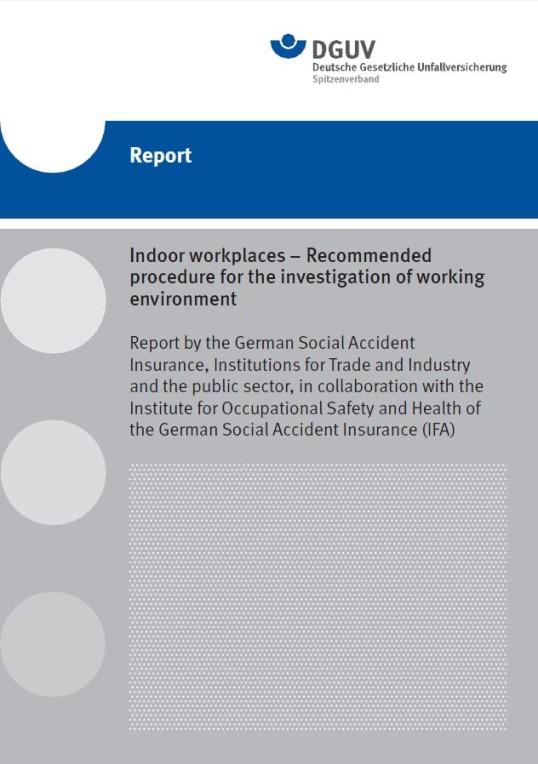Indoor workplaces – Recommended procedure for the investigation of working environment
Report by the German Social Accident Insurance, Institutions for Trade and Industry and the public sector, in collaboration with the Institute for Occupational Safety and Health of the German Social Accident Insurance (IFA)

Cover of the report Indoor workplaces
Abstract: Indoor workplaces are found in a wide variety of working environments such as offices, sales areas, hospitals, schools and preschool childcare facilities, and libraries. By definition, tasks involving hazardous substances (such as those encountered in a chemical laboratory) are not performed at such workplaces, nor do they include high-noise areas, such as workshops.
The complaints of employees at such workplaces are frequently described as sick-building syndrome. Symptoms include burning of the eyes, a scratchy throat, blocked nose, and headaches. These problems often cannot be attributed to a single cause, and require comprehensive analysis. Factors such as the room climate, disturbing sounds, lighting, workplace organization, and mental factors such as stress must also be considered, besides the quality of the breathable air.
The present report, "Indoor workplaces: Recommended procedure for investigation of the working environment", now in a third and completely revised edition, is intended to assist in the systematic investigation of health problems and subjective disorders arising at indoor workplaces, and in the identification of practical solutions. It describes a concept, geared to use in the field, for step-by-step identification of the causes, giving consideration to all essential factors which according to present knowledge must be considered possible causes of problems in indoor areas. Topics covered include health complaints, buildings, facilities, workplace organization, physical, chemical and biological hazards, and mental factors. The individual elements contain a wealth of information for the user which extends beyond investigation in response to complaints. This information is required for a greater understanding of the issues and serves at the same time as a basis for the redesign of workplaces in indoor areas such that they enhance performance and do not give rise to complaints.
Download

Bibliografic data

von Hahn, N.; Kleine, H.: Indoor workplaces – Recommended procedure for the investigation of working environment. Report. 1st english edition, January 2016 (based on the 3rd German edition). Ed.: Deutsche Gesetzliche Unfallversicherung e. V. (DGUV), Berlin 2016
ISBN: 978-3-86423-160-5